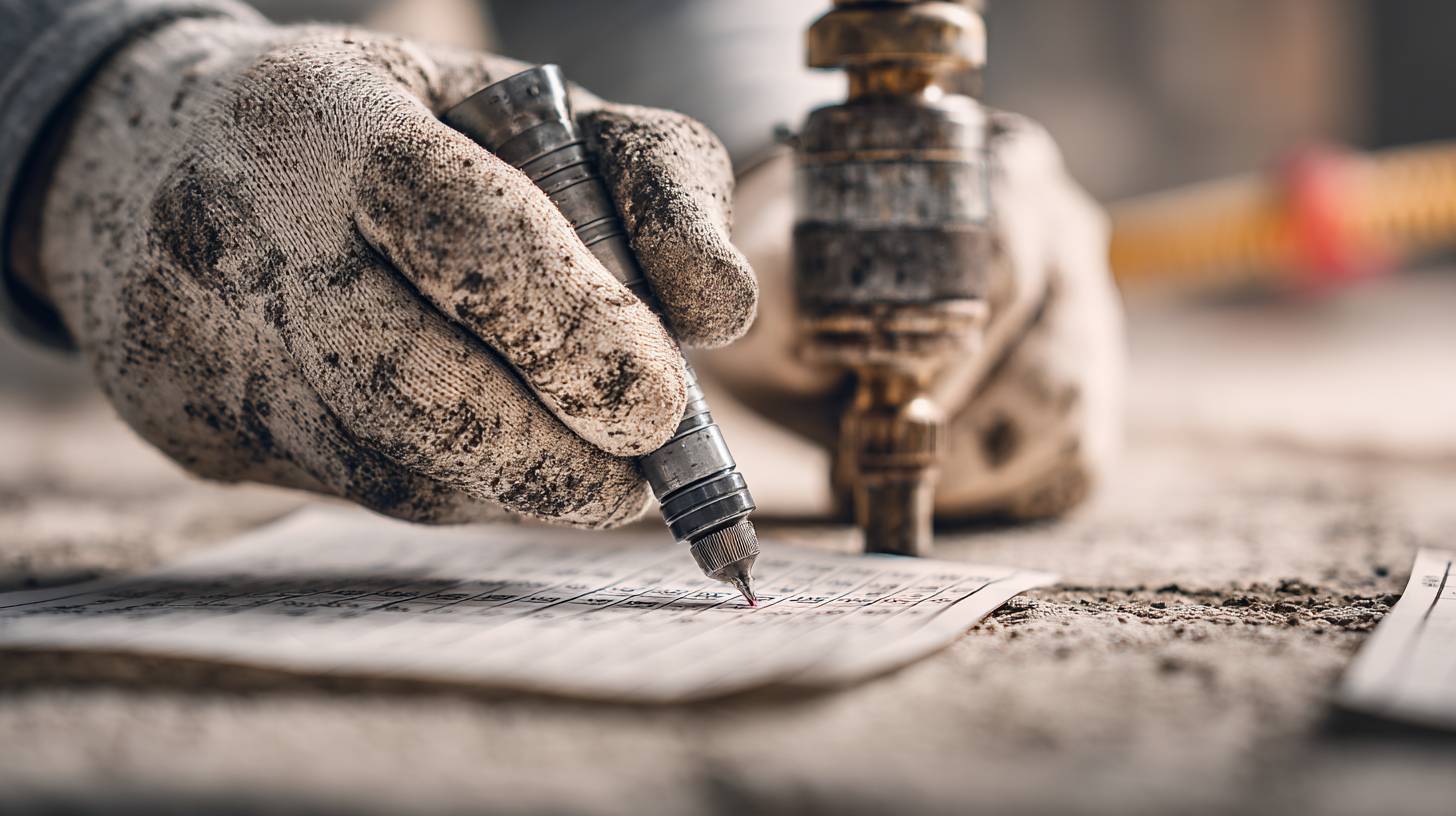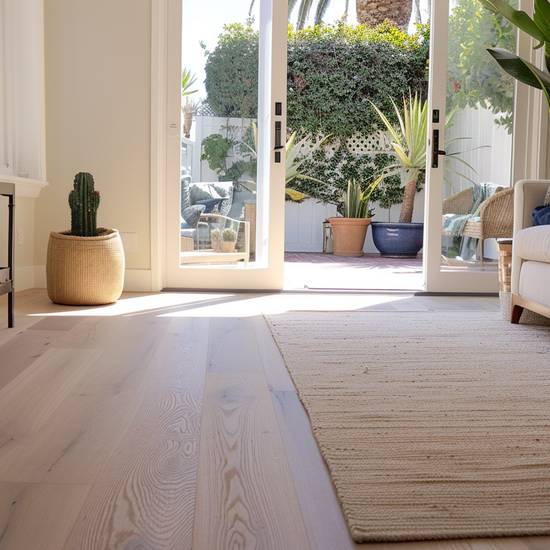If you searched for a commercial epoxy flooring contractor, you’re likely managing wear, moisture, or a tight schedule. This report explains why an epoxy floor fails, what a credible scope includes, and how to budget material and labor so your project holds up under real traffic.
We’ll walk through moisture testing, surface prep, chemical and UV exposure, and where alternative systems fit. Use the checklists and cost ranges to compare quotes and plan around operations without guesswork.
At a Glance—Fast Answers for Facility Teams
Most failures are attributed to moisture vapor, poor surface preparation (CSP mismatch), thermal shock/temperature swings, and chemical or UV exposure exceeding the coating’s rating. Ask for written moisture tests (ASTM methods), an ICRI Concrete Surface Profile (CSP) target, build/mil thickness by area, and a cleaning plan.
When to switch? Hot washdowns, cold rooms, or frequent thermal cycling often succeed with Cementitious Urethane Flooring rather than a thin-film Commercial Epoxy. The budget reality is that the installed cost per square foot is driven by prep and Moisture Mitigation, not just resin.
Moisture Vapor—The #1 Cause of Epoxy Floor Failure
Look for blisters, bubbles, or delamination on otherwise sound concrete floors, often at joints or low spots. It happens because there is no vapor retarder under the slab, recent pours, hydrostatic pressure, or skipped RH/MVER testing; high interior humidity in hot-humid zones.
Many mid-century slabs lack modern vapor retarders; contractors who recognize the building era anticipate a higher moisture risk and specify mitigation before coating.
Prevention—Testing, Moisture Mitigation, and Scope Control
Test first. Require in-situ RH or MVER results before mobilization. Then mitigate when needed. Moisture barriers and joint detailing are priced separately, typically $1 to $3/sq ft for mitigation and $0.50 to $1.50/sq ft for routing/filling.
Plan out the room. Dehumidification, temperature control, and cure windows reduce rework on quick-turnaround projects with low downtime tolerance.
Surface Prep & CSP—The Bond Breaker You Can’t See
A hidden culprit. Curing compounds, oils, or laitance block wetting; bonds fail under heavy usage or heavy impact. There is mainly a CSP mismatch. Thin-film epoxies need lower profiles; broadcast and mortar builds need higher profiles to anchor aggregates.
The cost impact? Mechanical prep and crack repair commonly run $1 to $4/sq ft, depending on condition and access.
Prevention—Clean, Profile, Repair, Then Coat
Degrease and rinse until the water breaks free. Shot-blast or diamond-grind to the specified CSP and verify uniformly. Route and fill cracks, patch divots, and honor movement joints. Seamless flooring systems still require proper joint detailing. Log method, passes, and dust control, which are critical on manufacturing floors and in warehouses that remain active.
Thermal Shock & Temperature Swings—Hot Washdowns, Cold Rooms, and Weather
Where it bites. Commercial kitchens, food processing, docks, and entries with cold temperatures and frequent thermal cycling.
Rigid films craze, crack, or shear at the bond line when slabs expand or contract quickly. Facilities built before modern sanitation standards often add hot-wash protocols later; coatings chosen for appearance suffer without a thermal-shock plan.
Prevention—Cementitious Urethane / Urethane Mortar for Harsh Environments
Use Cementitious Urethane (also called urethane mortar or polyurethane flooring) in thermal-shock or caustic zones; it offers superior resistance to heat and moisture. Installed cost typically $12 to $20/sq ft (materials + labor). Add integral cove and slope-to-drain to meet rigorous hygiene standards.
Transition plan. Use epoxy where aesthetics matter; urethane mortar where performance is critical, which documents the interface.
Chemical Exposure & Staining—Know the Chemistry
These are common offenders. Solvents, oils/fats, and acids/alkalis in projects with exposure to cleaners and process fluids. Decorative metallic epoxy without a rated topcoat in chemical zones dulls early. Expect $8 to $14/sq ft for quartz or flake broadcast builds with chemical-rated topcoats.
Prevention—Topcoats, Texture, and Secondary Containment
Choose abrasion-resistant, chemical-rated urethane or polyaspartic wear layers; specify gloss and UV resistance. Broadcast quartz or flake for traction in wet work while balancing cleanability. Add cove, curbs, or trench drains for spill control across a wide range of industries.
UV Exposure & Yellowing—Sunlit Lobbies and Entries
Aromatic epoxies amber or chalk with UV exposure; glazing accelerates exposure to sunlight. Look for visible color shift near doors and windows. To fix it, specify UV-stable aliphatic urethane or a polyaspartic topcoat and keep light colors where heat build is high.
Prevention—UV-Stable Systems and Exterior-Adjacent Details
UV-stable wear layers and pigments with proven lightfastness. Shade lines, mats, and routine cleaning reduce heat and dirt that magnify UV effects.
Use-Case Fit—Quick Comparison by Area and Demand
For commercial kitchens/food processing, cementitious Urethane with broadcast texture, high impact resistance, and hot-wash compatibility. Meanwhile manufacturing assembly / heavy traffic areas, use epoxy mortar with an abrasion-resistant topcoat; reinforce turning radii. Installed $12 to $20/sq ft.
For offices/corridors, thin-film Commercial Epoxy with low-odor spec to avoid strong odor complaints; installed $5 to $9/sq ft. Then, for hangars / large bays, use a high-build epoxy with anti-skid and light colors for visibility; confirm UV resistance near doors.
Cost, Downtime, and What Moves the Needle
What drives the installed cost per square foot? CSP level, Moisture Mitigation, cove base height, mil build, and topcoat chemistry. Faster cures and low-odor systems cost more but shorten closures, so decide on downtime tolerance early. Heavier loads require thicker builds and joint reinforcement; budget adders accordingly.
Contractor Checklist—Spec, IAQ, and Turnover
For searchers of commercial epoxy flooring contractors near me:
- Written test results (RH/MVER), CSP target, crack/joint scope, and build by zone.
- IAQ controls and ventilation notes to manage odor during installation.
- Maintenance guide, warranty terms, and a punch-list for handover.
Notes on Aesthetics and Color Systems (Optional)
Colorants. Solid, flake, quartz, or metallic systems; select palettes compatible with safety design options and wayfinding. Expectation setting. High-gloss looks may trade some chemical tolerance; confirm priorities with operations.
Cold Weather and Harsh Environments—Plan the Season
Temperature limits. Use epoxy resin that slows or blushes at low slab temps; temporary heat or hoarding may be needed. For condensation risk, a morning dew can ruin adhesion; require dew-point checks before each coat.
FAQ
How much does a commercial epoxy floor cost?
Thin-film systems often install at $5 to $9/sq ft; broadcast builds $8 to $14/sq ft; mortar or urethane systems $12 to $20/sq ft, depending on prep, mitigation, and access.
Can we reduce odor during installation?
Yes. Specify low-odor systems, schedule night work, and use mechanical ventilation to protect indoor air.
Is UV exposure a concern indoors?
Yes. Near glazing, use UV-stable topcoats to limit ambering and chalking.
When is epoxy not the best choice?
In hot-wash or thermal-shock areas, Cementitious Urethane or urethane mortar typically outperforms epoxy on durability and hygiene.
Choose Systems That Match the Risks
A commercial epoxy flooring contractor succeeds by matching system to risk: moisture, CSP, chemical exposure, UV exposure, thermal shock, and traffic levels. For U.S.A.-wide projects, Mr. Remodel connects you with vetted local pros—compare clear scopes, align costs and schedule, and move forward with confidence.































